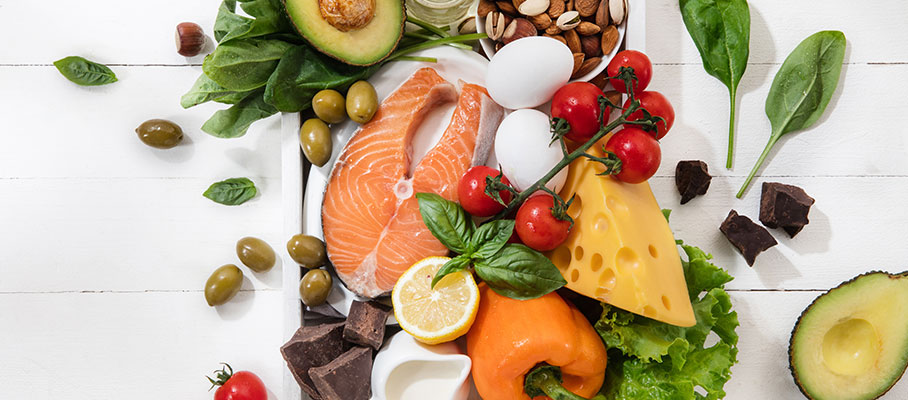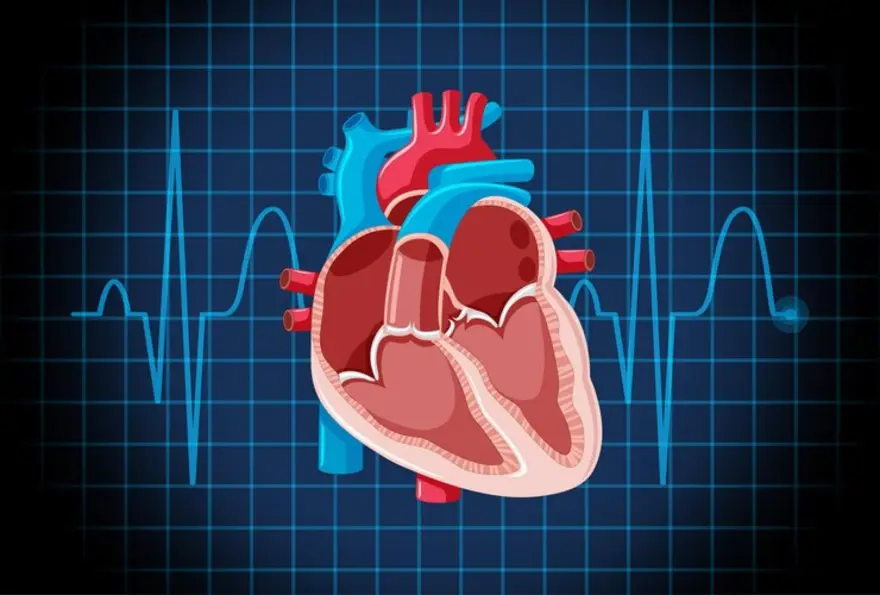high cholesterol diet plan
DASH Diet: Chart, Meal Plan, Meaning, and Benefits
Introduction Diabetes is the increased glucose or sugar level in a person’s blood. When your body fails to produce enough insulin, the glucose level in your body rises automatically. The most common type of diabetes is type-2 diabetes. It is prevalent among adults. However, children are often victims of type-1 diabetes. It is also called juvenile diabetes. Diabetes is a common medical condition. According to the World Health Organization (WHO), nearly 422 million people have diabetes. In India, the prevalence of diabetes is almost 11.4%. However, the 2019-2021 reports revealed that India saw 31 million new cases dealing with diabetes, a rise of 46%. The rate of diabetes in the United States is also growing. Almost 37.3 million people covering 11.3% of the total population, have diabetes. What is more disturbing is that many of them are unaware of their condition. Diabetes may damage internal organs like kidneys, heart, eyes, and blood vessels. Nearly 1.5 million people die due to diabetes every year. To curb the growing menace, doctors and dieticians are promoting a new type of diet—dash diet. It is said that dash diets can help you control your blood sugar levels naturally. The dash diet is simple and easy to follow. What is a Dash Diet? DASH stands for Dietary Approaches to Stop Hypertension. As the name suggests, the dash diet is recommended to reduce blood pressure. However, in the past few years, doctors are recommending this diet to patients dealing with diabetes, especially type-2. The diet is simple. It allows you to eat a spoon full of your favourite dish. However, the diet focuses on limiting the quantity of a serving while increasing the number of servings a day. Who is a Preferred Candidate for Dash Diet? Though the dash diet is primarily recommended for people with blood pressure and diabetes, anyone can try it for a healthy life. Research says that the dash diet can positively affect everyone, especially children. You must visit your doctor for a consultation. Once your doctor certifies that you are a good fit for the dash diet, you can rest assured. Visit a designated dietitian and get your diet chart according to your body requirements. Is it Tough to Maintain a Dash Diet? Every new practice seems to be difficult at first. But, once you initiate the program and stick to it diligently, you will find it easy. The dash diet is easy to follow. You can continue enjoying your favourite dishes but in moderation. However, you may have to say goodbye to salty and sweet snacks. Relay your preferences to your dietitian and get a chart prepared accordingly. What Can You Eat in A Dash Diet? You can eat almost everything. The dash diet primarily focuses on whole grains, green vegetables, and lean meat. Let’s dig more into it: Whole grains: Bread, chapatti, pasta made of whole grains, brown rice, oat cereals, quinoa, and other whole grains if possible. Fresh vegetables: All kinds of vegetables, especially green leafy ones like spinach, kale, and collard greens. Add colourful vegetables like carrots, beetroots, beans, bell peppers, and tomatoes Protein (Lean): Chicken, beef, turkey, lamb, and fish. Avoid organ meats like liver and brain—tofu for vegetarians Fruits: Fresh fruits like apples, bananas, berries, citrus fruits, and melons Nuts and Seeds: Almonds, peanuts, pistachios in nuts, sunflower and pumpkin seeds, and lentils and chickpeas in legumes Dairy products: Low-fat milk, cheese, and yoghurt You do not have to go from one store to another to find the right ingredients. All these items are easily accessible in the market. A Sample of Servings Per Day Whole grains: Rice: 98 gms; chapatti: 1; cereals: 28 gms Vegetables: Green vegetables: 30 gms; others: 45 gms Protein: 28 gms; egg:1 Fruits: Apple: 1; others: 40 gms Dairy products: Milk: 240 ml; yoghurt: 285 gms; cheese: 45 gms Oil and fat: Oil: 1 teaspoon; mayonnaise: 1 tablespoon; olive oil for salad: 2 tablespoons Nuts and seeds, and Legumes: Nuts: 50 gms; seeds: 16 gms; legumes: 40 gms You can have snacks in limited servings, 5 or less, weekly. Try to eat in moderation so you do not exceed the 2,000-calorie limit daily. This is a general serving number for each day. Your dietitian will instruct you properly. Book Sugar Test Conclusion Dash diet is for everyone. A good dash diet can reduce the chances of getting diabetes by 20% in the future. You can start a dash diet for your entire family to ensure good health. However, you should always consult a certified dietician and get a customized diet chart for everyone in your family. This is because every individual requires nutrition according to their health condition. It may seem challenging initially, but you will get used to it. Try to follow the instructions of your health provider strictly. You must check your blood sugar level regularly to ensure the changed diet works positively. Metropolis Healthcare stands amongst the leading diagnostic centres in India. They have one of the largest chains spread throughout the country. Visit the nearest Metropolis Healthcare Care to monitor your blood sugar level. They are reputed in the market for their satisfactory services.
Diet Dos and Don'ts If You Have High Cholesterol
High cholesterol is a chronic condition that is extending its claws in India gradually. Recent studies have reported that 25–30% of urban and 15–20% of rural India are affected by high cholesterol.* Cholesterol is a fat-like substance found in all body cells. However, an excess or a disbalance of cholesterol values is a major contributor to compromised heart health, heart disease, and stroke. Want to cut your risk of heart disease? Then, it is mandatory to get tested and keep a track of your cholesterol levels. Cholesterol travels within the body with the help of protein molecules, the combined molecule called lipoprotein (lipo: lipid or fats, in addition to protein). Majorly, cholesterol can be of two types, based on the type of protein that transports it through the bloodstream: Low-density lipoproteins/ LDL cholesterol: Carries cholesterol from the liver into the blood, where it can stick to the blood vessels. As this kind of cholesterol is likely to build up, people often refer to it as “bad” cholesterol. High-density lipoproteins/HDL cholesterol: Carries the cholesterol in the blood back to the liver, where it is broken down. For this reason, HDL cholesterol is called “good” cholesterol. A health goal worth achieving for every individual is to elevate levels of good cholesterol and control the rise in bad cholesterol. Book a lipid profile test and know the values. Role of diet in cholesterol The diet, especially fats, we eat has a significant role in blood cholesterol values. Hence, it is of utmost importance to pay attention not only to what types of food we are consuming but also their quantities entering the body. Let’s learn the most important dietary dos and don’ts to follow if your cholesterol levels are high: Dos Watch the type of fat you consume: The dietary fats can primarily be of three types. Different types of fat impact your cholesterol levels differently: Saturated fats: They instruct the liver to produce more bad cholesterol, hence their intake should be limited. Unsaturated fats: Certain unsaturated fats can facilitate the reabsorption of bad cholesterol through your liver. Hence, it is a healthy type of fat that can help reduce bad cholesterol. Trans fats: These fats are produced by an artificial process called hydrogenation, and they might also harm your good cholesterol levels. Fried and packaged foods often contain trans fats. In addition, refined oil, ghee, etc contain saturated fats. Add more sources of unsaturated fats to your diet. Foods like nuts, dry fruits, and seeds are rich in unsaturated fats. Choose healthful fats to lower bad cholesterol levels while maintaining good cholesterol levels. Please note that a completely fat-free diet can also be harmful because it would impair normal nerve and brain function, and can cause inflammation. Fibers for a healthy heart: Fiber can be of two main forms: soluble and insoluble. Many foods contain both forms. At large, the more natural and unprocessed the food, the higher is its fiber content. While insoluble fiber is pivotal for gut health, soluble fiber binds to cholesterol in the blood and helps remove it through feces. Fiber-rich foods have the added benefit of controlling blood sugar levels as well. Include more peas, broccoli, spinach, carrot, pear, oranges, strawberries in your diet. Eat plenty of vegetables. Note that there is no fiber in meat, milk products, or sugar. Use healthy oils for cooking: Mustard oil is a healthier option as it remains stable at high temperatures usually used in Indian cooking. Olive oil is rich in healthy fats too. But limit its usage in salad and dressings, and avoid using it for cooking Indian recipes. Refined oils usually contain more saturated fats. Consume healthy protein sources: Limit unprocessed red meat. Select lean meat (trimmed of fat, and poultry without skin). Including protein-rich foods like fish, eggs, legumes (such as beans and lentils) in your diet keep you full and helps you avoid munching on unhealthy fatty snacks. Dont's Restrict takeaway foods to once a week: Fast food and readymade processed items such as pastries, bread pakodas, burgers, pizza, chips, etc are usually made of unhealthy cheese and rancid oil. Eating them too frequently can hurt your cholesterol levels drastically. Consult with your doctor about how often you can consume outside food. Limit salt in daily food and snack: Limiting salt won't decrease your cholesterol levels directly, but it can help maintain blood pressure levels and decrease your risk of heart diseases. Both high cholesterol and high salt intake can increase blood pressure, and predispose to heart attacks and strokes. Even if you have not been diagnosed with high blood pressure, you should eat less salt. Along with a healthy diet, make sure to get your cholesterol tested regularly. It is important to track so that you know the measures are taking are working well for you.
 Home Visit
Home Visit Upload
Upload
















 WhatsApp
WhatsApp